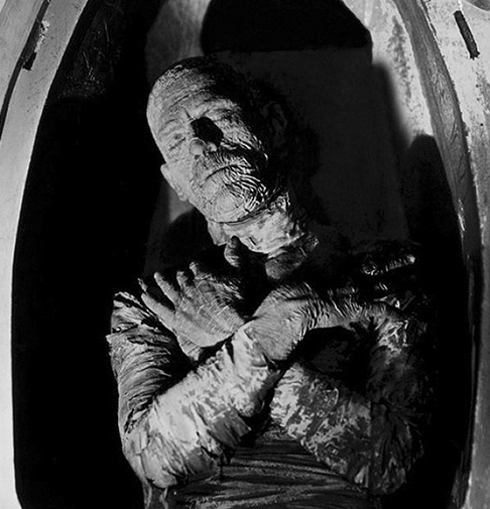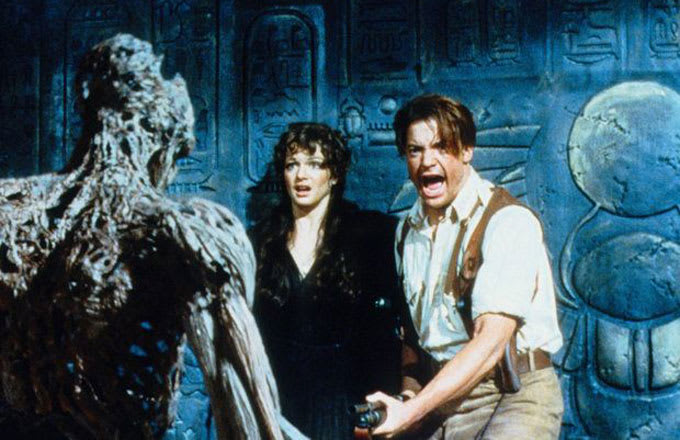![]()
 Nineteen thirty-two. The year Aldous Huxley’s novel, Brave New World, was published. The Great Depression was at its worst. Franklin D. Roosevelt defeated Republican Pres. Herbert Hoover to become the American president in a landslide win. Gandhi went on a hunger strike. Amelia Earhart became the first woman to fly non-stop solo flight across the Atlantic Ocean. Eighty-four-year-old Paul von Hindenburg was re-elected president in April, defeating Adolf Hitler. Charles Lindbergh’s 20-month-old son was kidnapped from his New Jersey home. Buck Rogers in the 25th Century, the first scifi radio show was first aired. Irving Berlin, Cole Porter, Fats Waller, George Gershwin and Duke Ellington all had hit songs.
Nineteen thirty-two. The year Aldous Huxley’s novel, Brave New World, was published. The Great Depression was at its worst. Franklin D. Roosevelt defeated Republican Pres. Herbert Hoover to become the American president in a landslide win. Gandhi went on a hunger strike. Amelia Earhart became the first woman to fly non-stop solo flight across the Atlantic Ocean. Eighty-four-year-old Paul von Hindenburg was re-elected president in April, defeating Adolf Hitler. Charles Lindbergh’s 20-month-old son was kidnapped from his New Jersey home. Buck Rogers in the 25th Century, the first scifi radio show was first aired. Irving Berlin, Cole Porter, Fats Waller, George Gershwin and Duke Ellington all had hit songs.
And in 1932 Boris Karloff starred in the Universal Picture’s film, The Mummy. It was a dark, brooding film shot in black and white, rich in noir-ish shadows and implied threat. It was inspired in part by the 1922 discovery of Tutankhamun’s tomb and the alleged curse that carried (spoiler alert: it didn’t) – the opening of the tomb was a worldwide pop culture event even a decade later – and also possibly by a short story by Arthur Conan Doyle, The Ring of Thoth (1890).
But oddly enough, it was also a love story, one that stretched out through millennia. The iconic mummy costume – therefore the monster – is seen only for a short time at the start of the film, making it less visually scary than some films in the genre. Karloff, shorn of his wrappings, plays a newly-resurrected human – still pretty creepy in a restrained, almost gentlemanly way. And yet there’s a certain sympathy in the movie for the monster who remains in love. Roger Ebert even called his performance “poignant.”
The 1932 version, seen today, is far from scary, and more artistic than you might expect from a monster movie. The monster-into-man transition turns it into more of a suspense thriller than fright film. Universal came back with more traditional monster roles for the mummy in a series of low-budget remakes in the 1940s (most starring Lon Chaney Jr), but they failed to win over audiences or reviewers.
Universal had had significant successes with its first two monster films, both released in 1931: Frankenstein (also starring Karloff) and Dracula. These two would go on to spawn several sequels, but The Mummy never had a real sequel, although several “re-imagined” Mummy films would be made from 1940 through to the 1970s. Other monsters would join the party in the subsequent years: The Invisible Man, the Creature From the Black Lagoon and many more.
The original was done entirely without CGI: the effects, the imagery, the mood are all done through acting, makeup, lighting, dialogue and set design. The latter is minimal, at least compared to elaborate modern sets. And many of the actors learned their trade in the previous silent films, so they had to act physically, with gesture, with facial movement. There are no elaborate chase scenes or stunts – in fact it has more talking heads than action. No pseudo-realistic gore, either. The overall effect is much more human and thus much more compelling than modern films that rely far too heavily on computer-generated visuals and effects.
And Karloff himself is so reserved that he’s less scary than brooding and for a villain he’s unexpectedly pensive and civil. It should be no surprise to my readers that this version of The Mummy is my favourite, not least of all for its noir presentation and characters.

Although its is set in the 1920s like the original, the remake is much more of an adventure romance with a dash of humour and lots of energy (even if the characters are stereotypes and the situations they find themselves in entirely predictable). While it takes snippets of storyline from the first – call it “inspired by” rather than based on – it is more Indiana Jones than Karloff. Lots of action, chases, snappy dialogue, and a recognizably unpleasant villain. Roger Ebert called it “good trash.”
It’s a fun film, dripping with special effects, action and snappy dialogue; comic but not a classic. And certainly not noir or even close to noir. By the way, I’m not opposed to CGI – just don’t like it when effects dominate a film and demand more attention than the story, acting or dialogue.
A sequel – The Mummy Returns – came out in 2001 with the same cast, dialogue, and effects. Except it has a child in it and that makes the finale predictable because it is now a “family” film and the child has to survive unharmed. It did have the saving grace of giving Imhotep some feelings for his long-lost love Anck-su-namun – apparently unrequited since she lets him die at the end.
Popcorn films, both of them, good for an evening of entertainment. Not bad, even funny in places, just not terribly memorable – which has the one advantage of allowing you to rewatch them more easily. Great finds in the $5 DVD bin, especially if you can get the pair in one box. There was a 2008 sequel set in China – The Mummy: Tomb of the Dragon Emperor – but I felt it rather a mechanical reworking of the previous two films and overall rather stale. Plus it lacked the presence of Rachel Weisz who was crucial to the character development in the previous two.
The films spun off another franchise – the Scorpion King series – that leave the comic adventure-romance theme behind in favour of straight adventure action. B-films the lot of them. Only the first is worth the time to watch, and purchased only as part of a multi-film collection in the $5 bin.

Jump ahead to 2017 and enter Tom Cruise. This time the film isn’t in the $5 bin yet – but discounted well below $10, so it’s close. Fan reception to this version was lukewarm at best, and it received generally negative reviews from the critics.
I had seen previews of the film and while it looked promising, but recalling the wreckage of 2005 remake of The War of the Worlds which also starred Cruise, I wasn’t optimistic this remake would be better. (Yes, I know, War was nominated for three Oscars but for effects, not for actor or acting… and lost them all to Jackson’s bloated King Kong). Mostly the problem with Tom Cruise’s films is that they have too much Tom Cruise in them.
But I bought it anyway. I’m a sucker for monster films, despite my misgivings over Tom Cruise.
The first thing that stands is that while it shares many of the same plot elements as the previous films – an Egyptian mummy brought back to life searching for a long-dead lover while wielding supernatural powers – it is not so much a remake as a re-imagining. It’s no longer the 1920s – it’s now, and the tomb is in Iraq not Egypt (the explanation for same is a bit odd but not a plot breaker). And as you expect from a film with Cruise, it’s chock-a-block with action, stunning sets, and special effects.
The 55-year-old Cruise is trying to play himself as he was twenty years ago, and as the love interest of a two women both twenty years his junior, it just feels strained and awkward. Cruise’s Nick Morton character isn’t very likeable, either, so the audience has little sympathy for him.
And because Cruise seems to play the same character in all of his recent films, it’s hard for one cardboard cutout to distinguish himself from the others. At times the film feels like Mission Impossible VII (or VIII or whatever the next one will be numbered…) – the mummy bit just pasted onto the script as a diversion. And then they added the crusaders, zombies and a secret society… just in case there weren’t enough dangly bits to confuse viewers.
The biggest departure from the original is in a female as the main antagonist: Sofia Boutella plays the mummy. She handles the role quite well and athletically, although she never comes across as the sort of villain the role demands. The director doesn’t seem to be be able to decide if she should be sexy or horrible (or both) so she isn’t really either. Her presence onscreen is less intimidating and less titillating than it ought to be and her powers are never fully exploited. In fact, there isn’t a single scary moment in the film, and the one jump scare is telegraphed ahead so it loses its potency.
The rest of the film is a mish-mash of action, chases, special effects – and while entertaining, most are predictable and linear, and could come from any recent action film. (BTW, watch the DVD features to see how some were created. The technical aspects are both fascinating and respect-worthy).
The biggest problem for me is that the film is meant to set up another re-imagined franchise – the “Dark Universe” – in which monsters of the past will be rewritten into new plots and revised characters. You get a hint of this in the Russell Crowe Dr. Jekyll/Mr. Hyde character. That inclusion and the oddly 19th-century set he appears in were so at odds with the rest of the plot that it sat like a burr in my jockey shorts for the rest of the film.
Not that remakes are re-imaginings or even sequels are all bad (the Planet of the Apes remake and sequels are all excellent), but they too often lose the reason the originals worked so well. Implied threat gives way to overt effects. Subtle gesture becomes wild action. Supersizing doesn’t make a film better, just louder and flashier.
It seems Dark Universe will try to blend the classic monsters with elements from modern comic book character films (most of which are themselves drearily cookie-cutter alike). When Universal later tried to blend the monsters that were such an initial success in the 1930s, they ended up with a lot of B-films that were not as much scary as predictable and often silly, culminating in the comic Abbott and Costello films that poked fun at the entire genre. The Mummy sequels of the 1940s are themselves a case in point.
The ending of the most recent version of The Mummy leaves it open to a sequel – Cruise’s character becomes anointed with superpowers, raises his friend from the dead, and vanishes into the desert. A sort of non-ending that leaves it open for him to return. Sigh.
My personal favourite of this group remains the original Karloff version, although the 1999 remake is a more entertaining film in most aspects. The 2001 sequel was also fun, and I expect I’ll rewatch both in the future. I have enjoyed some of the 1940s remakes too, but mostly for the fun of watching the classic fright films that seem so tame and cheesy today. But I’m not likely to watch the 2017 version again simply because for all the effects and action, it wasn’t very good and even less memorable than the Brendan Fraser films.

